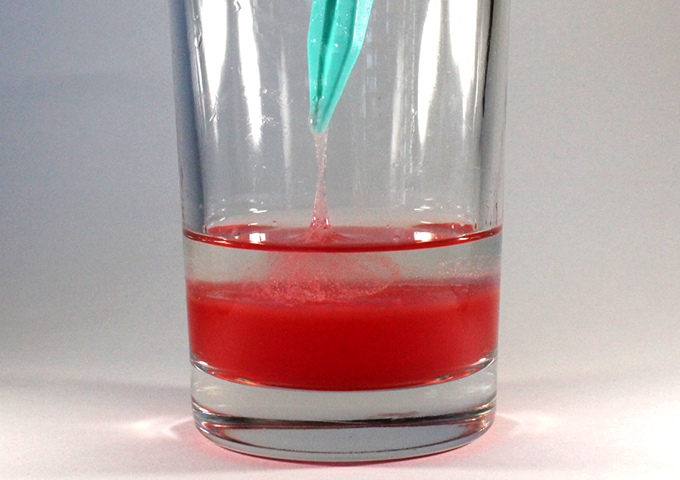
What you need
- 1⁄2 cup of cold water
- 1⁄2 teaspoon table salt
- 2 teaspoons dishwashing liquid
- 3 large strawberries
- isopropyl alcohol (64% v/v), available at pharmacies
- knife and chopping board, small bowl, fork, fine sieve, small glass and toothpick or tweezers
Safety warning
Isopropyl alcohol is a highly flammable and volatile liquid. Use in a well-ventilated area, away from heat, flames, or sparks, and avoid contact with skin. Keep out of reach of children and dispose of foodstuffs immediately after use. Do not eat or drink any of the materials in this activity.
What to do
- Add the table salt and dishwashing liquid to the water and mix well.
- Remove the green tops from the strawberries and cut the red fruit into small pieces. Place the pieces in the bowl and mash with the fork.
- Add 2 tablespoons of the water mixture to the straw- berries and mix thoroughly.
- Working slowly to avoid making bubbles, continue to mash the fruit with the fork for about 2 minutes.
- Strain the strawberry mixture into the glass. Collect as much of the liquid as possible and discard the mush. If there are bubbles on the surface of the liquid in the glass, use a spoon to carefully remove the bubbles.
- Slowly add some alcohol to the glass to create a layer of alcohol above the layer of red liquid.
- Leave the glass to sit for a few minutes and look for a white substance appearing in the alcohol layer. This is DNA and can be lifted out with a toothpick or tweezers.
The DNA can be kept for a few days in a sealed bag or container in the refrigerator. Dispose of all other materials immediately after use. DO NOT EAT IT.
What’s happening?
DNA (deoxyribonucleic acid) is the genetic material inside most of the cells of living things. It contains the information for the formation, growth, and development of plants and animals.
Mashing the fruit started the process of breaking apart the cell walls and adding dishwashing liquid helped to break open the cell membranes, including around the cell nucleus where the DNA is. The salt was added to strip protein molecules off the DNA, although the finished product in this extraction method will still have some protein attached. DNA dissolves easily in water, but not in isopropyl alcohol. The layer of alcohol caused the DNA molecules to separate (precipitate) from the solution.
DNA is a long, thin molecule, which is why extracted DNA has a stringy texture.






